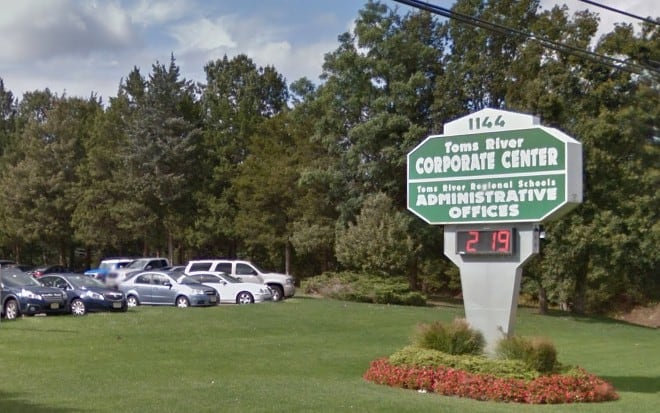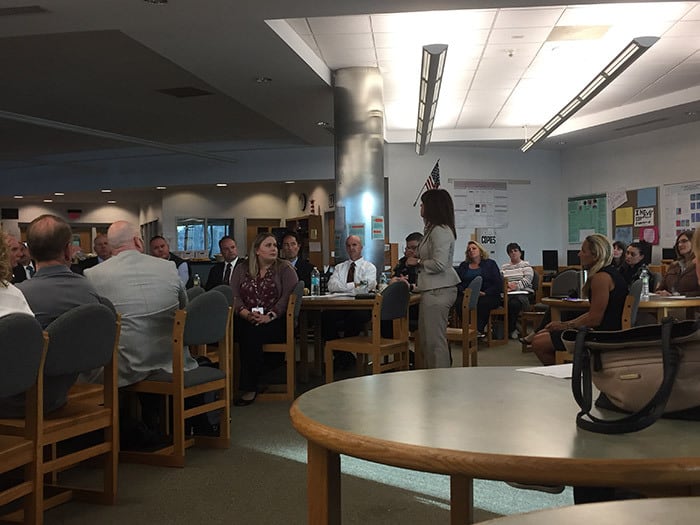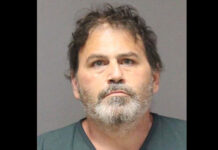
TOMS RIVER – It has been more than two months since the shooting in Parkland, Florida occurred, but students and staff are still worried. How can we keep our schools safe? How can we prevent that from happening to us?
Toms River schools held a meeting of the Super Safe and Drug Free Schools Committee at High School North on Monday to discuss the various measures taken to protect students throughout the district. Some items discussed during the meeting pointed to things done differently since Parkland, and some discussed protocols that are just a continuation of security measures already in place by the district.
The Super Safe and Drug Free Schools Committee was created after Columbine by the superintendent at the time, according to assistant superintendent Debra McKenna. The meetings are held a few times throughout the year and are meant for “information sharing” about school safety and prevention initiatives, programs, and measures.
“Our children are faced with more challenges than ever,” said Superintendent David Healy. “When the community, schools, and partners work together, they can provide the best possible resources and expertise to provide the safety, well-being, and education of all our children.”
Present at the meeting were representatives from several of Toms River schools’ education partners, such as RWJBarnabas, Preferred Behavioral Health Group, Hackensack Meridian Health, and local law enforcement. Representatives each gave a short presentation on what they do to contribute to student safety and prevention. This includes services such as mental health surveys, special education services, and counseling, to name a few.
Also present were student representatives from Toms River High Schools East, North, and South. These students discussed some of the programs and activities going on in each school that get students involved in their own safety and education.

Lindsey Diehl of Toms River East talked about the School Safety Team. “We attend different events so we can inform ourselves and then help inform the school,” she said.
She described EMT and K-9 unit demonstrations as part of their safety education this year. The fire department also visited the team to discuss dorm safety. Diehl said that a professional also came in to inform the students with drug awareness and suicide presentations.
“This year our big event was, we did a Parkland memorial service inside the gym, instead of a walkout,” she said. “The hope was that all the kids could come to the gym, which was a lot safer.”
This was a common theme in Toms Rivers’ schools. Maisy Sullivan of Toms River South remarked that they too held a memorial service for Parkland victims rather than hosting a walkout, for safety reasons.
“I agree that was definitely a more healthy and a more safe way to commemorate everybody who was lost,” she said.
Sullivan also remarked that South has implemented some extra safety measures since Parkland to keep the kids safer. One example of that is having one specific locked door that visitors come in and out of, where a security guard checks ID.
South student Isabella Gluck had an idea to stock the classrooms with canned goods for an ongoing food drive, that way students could use the cans as tools to ward off or distract intruders by throwing them.
“We could throw them and try and catch the shooter off guard…our students would be able to handle that,” she added.
North student Madison Bennert spoke about a time when students could walk outside of the building in between classes. “But since these shootings, we’ve really pulled back on that,” she said, adding that she feels safer because of this.
Ocean County prosecutor Joseph D. Coronato was also present to provide an explanation of the GXP system that the county is using, and has been lauded for, to map out schools for law enforcement officials.
“It’s all about communication…we have to be able to communicate where we are,” he said.
The GXP system enables law enforcement officials to view the layout of the schools using military grade technology and locate other officers easily. Other officers are tagged on the map at their location and are only a click away for other officers to communicate with them in cases of emergency.
“The idea came from the military…this is the same technology that the strike unit used way back when,” the government was looking to take out Osama Bin Laden, said Coronato.
Most of the high schools in Ocean County are being mapped out for the system, including the Toms River schools, he added. Some of the intermediate schools are planned to be mapped out as well. Chief Robert Tapp of the Beachwood Police Department noted that Intermediate South School is going to be mapped in the near future.
“This is not going to stop an event from occurring, but what it will do is try to eliminate that person as quickly as possible…and maybe limit the damage,” said Coronato.
The county breaks safety procedures down into three categories: security, safety, and surveillance of the schools; initial response to a threat; and elimination or limitation to the danger of an incident, he explained.
“Thirty [juvenile] cases have actually come into our office since the [Parkland] shooting took place,” said Coronato, emphasizing the magnitude of the issue.
Chief Tapp and Chief Mitchell Little of the Toms River Police remarked during their presentations that it is a priority of both departments to add more SRO’s (School Resource Officers) to the schools. Little explained that there are already four SROs in Toms River schools, but the department plans to add more after the budget passes. Tapp and Little said that they hope to see more SRO’s in the local schools come September.







